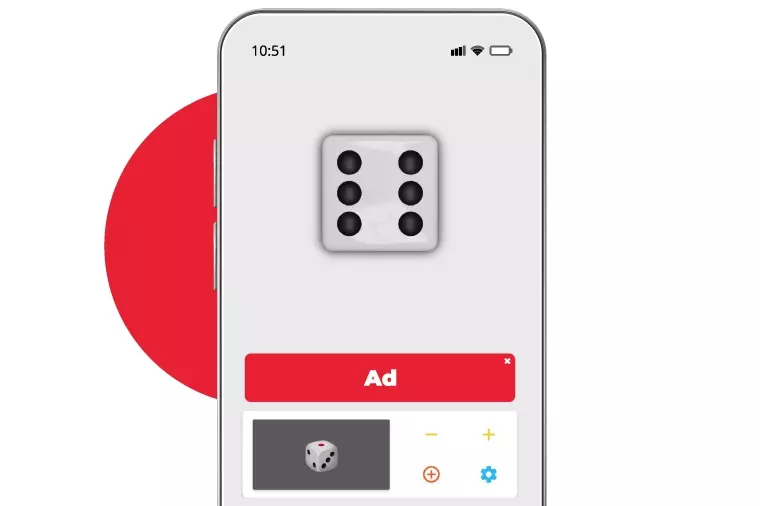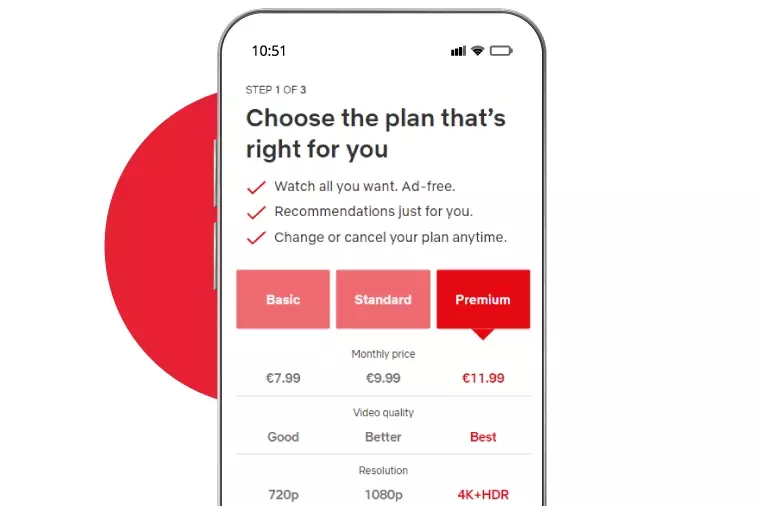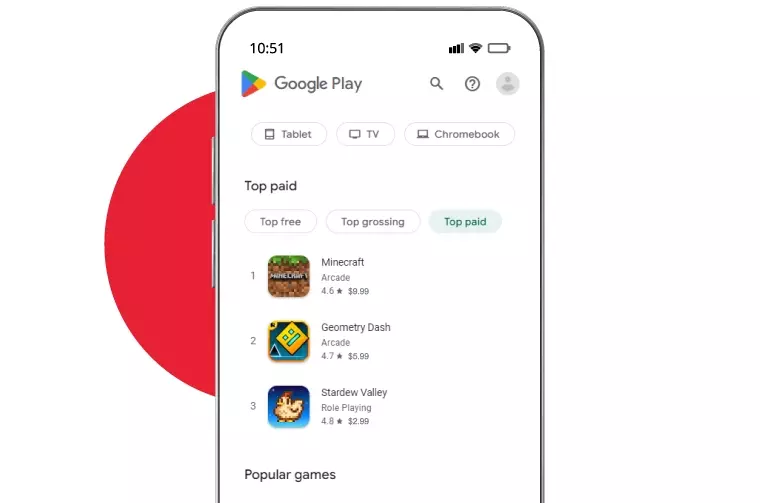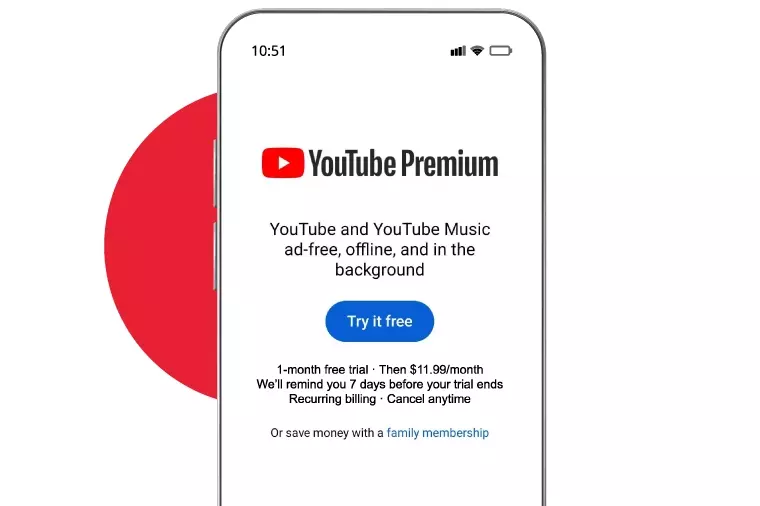Monetizing an app is a great way to generate income and make the hard work of developing an application worth it. However, there are many different app monetization strategies out there, and not all of them will be equally effective. Our detailed guide is here to walk you through some of the most widely used and best app monetization models. Learn all you need to know about making an app profitable, and if you’d rather jump straight to monetization strategies, you can do so from the table of contents below.
What Is Mobile App Monetization?
Mobile app monetization is the act of making money off a mobile app. Developers, publishers, or other rights holders can generate income from a mobile application by showing ads, charging for downloads, and so on.
What Are Mobile App Monetization Models?
An app monetization model is a long-term strategic plan to make a mobile app profitable. When developing this strategy, publishers have to get acquainted with all the options at their disposal, as well as consider other factors, such as the type of application they are monetizing and their user demographic.
App Monetization Trends in 2023
The mobile app market is booming and changing rapidly, and the same goes for monetization trends. So to develop a well-rounded, effective app monetization strategy, you should be aware of the current and upcoming trends in the market.
According to Statista, advertising has been the most prolific app monetization model for years now, and it is predicted to stay that way. In 2022, apps made around $215 billion from advertisements, as opposed to in-app purchases, which generated around $200 billion. On the other hand, paid apps seem to be the least profitable option, with only a little over $5 billion generated in 2022. However, the undisputed king of mobile app monetization is the hybrid model, i.e., a combination of two or more basic monetization methods.
But what changes can we expect to see in 2023? First of all, both ad-based and transaction-based monetization strategies are predicted to continue thriving. However, with the death of the third-party cookie silently looming over the advertising industry, data monetization is expected to become increasingly profitable, too.
8 Best Mobile App Monetization Strategies
In order to decide on the best app monetization model for your app, it’s important to get acquainted with all available options. So let’s take a look at the top 8 most popular app monetization strategies.
In-App Purchases

In-app purchases are very popular, especially for mobile game monetization. In this app monetization model, users purchase in-app commodities for real money. For instance, they may purchase extra lives in a game or access to an article in a news app. A popular example is the game Candy Crush Saga, where users can purchase extra moves at each level of the game for around $1.
Pros:
- Works well with other monetization models
- High earning potential
- Allows for a lot of customization and flexibility
- Boosts user engagement and retention
Cons:
- Requires more backend work
- Not a consistent source of income
- Some users steer away from this model
Freemium Model
The freemium model is a tiered pricing model with a free, feature-limited plan and a paid, feature-rich plan. With this model, users can use an app for free with no issues, but if they want additional features, they will have to pay extra. A famous example is Dropbox, where the free version provides users with a certain amount of storage with the possibility of getting more for a price.
Pros:
- Attracts a broad audience
- Boosts user engagement and retention
- More stable source of income than IAP
- Can be applied to a wide variety of apps
Cons:
- Requires more constant backend work
- Requires customer support
- App stores charge higher fees
In-App Advertising

In-app advertising is the most widely used mobile app monetization model. With this model, publishers partner up with mobile ad networks to serve ads to users. Most commonly, ads allow publishers to provide access to their apps for free. However, a hybrid strategy including ads and a transaction-based monetization model is also common.
Pros:
- Works well with other monetization models
- A wide variety of available ad formats
- The app can be free-of-charge for users
- Some ad formats can boost engagement
Cons:
- Needs an established user base to be profitable
- Can be disruptive to the user experience
- Requires a certain level of ad tech knowledge
Popular Mobile Ad Formats
There are various mobile ad formats to choose from if you decide to go with this strategy. However, not all formats are good for all apps. For instance, rewarded video ads are great for mobile games, but not so much for, let’s say, weather apps. Let’s take a look at the most popular ad formats for apps.
| Ad Format | Description |
|---|---|
| Banner Ads | – Show up in rectangular windows – Can be static or dynamic – May follow the user as they scroll – Non-intrusive ad format |
| Video Ads | – Show up within a video stream (instream ads), before, during, or after a video – Can also show up independently within another format (native, interstitial, etc.) – Varied levels of intrusion and effectiveness depending on type and placement |
| Interstitial Ads | – Cover the whole screen, making the app temporarily inaccessible – The user needs to watch it for a certain amount of time or click out of it – A highly intrusive format that requires strategic placement |
| Native Ads | – Blend in with the rest of the content – Come in various shapes and sizes to match the look of the app – May contain videos, images, text, etc. – Require more work to implement than most other formats |
| Rewarded Ads | – The user gets an in-app reward for watching the ad – Boost user engagement and prompt them to stay in the app longer – Usually, the user has to request this ad – Especially popular in mobile games |
| Playable Ads | – Allow the user to play an in-ad mini-game – Direct to a landing page after a certain number of clicks or game completion – Mostly used to advertise mobile games |
Premium Subscriptions

Somewhat similar to premiums, subscriptions offer users a choice between two or more plans at different prices and with increasingly more features or content. In other words, users can pick a plan that best fits their needs and budgets. Publishers usually also offer a time-limited free trial, which makes it easier to attract new users. Netflix is among the most popular subscription apps on the market right now.
Pros:
- Attract a wider audience with various budgets
- Users are more likely to engage with the app
- Drives stable, consistent revenue
- Preferred by users who don’t want to see ads
Cons:
- Not everybody wants to pay to use apps
- Requires customer support for paying users
- Requires regular updates and fresh content
Pay Per Download

Some publishers choose to monetize their apps by charging users for downloading them. This monetization method has been on the decline for some time now, as users are mostly not too eager to pay for an app without a trial run first. In general, games tend to perform best with this model. Some of the most popular pay-per-download apps include Monopoly, IPTV Pro, and Threema.
Pros:
- Better user retention and higher consumer loyalty
- Competition among PPD apps is not too fierce
- The app store handles the payment process
- Quicker return on investment than most other models
Cons:
- Requires premium content and customer support
- Doesn’t work well with other monetization strategies
- Not a reliable and consistent source of income
Affiliate and Sponsorships

Affiliate marketing and sponsorships allow publishers to monetize an app through direct contracts with other businesses. For instance, if you have a fitness app, you may be able to partner with a sportswear company and offer their products to your users at discounted prices. In return, you would receive a cut from each purchase made through your app. Major app stores, such as Apple Store and Google Play, offer affiliate programs to facilitate this process.
Pros:
- High earning potential
- Introduces added value to your app
- Less aggressive and intrusive than other models
- Can be combined with other monetization strategies
Cons:
- Requires an established audience and reputation
- Not a consistent source of income
- Partners and sponsors must be thoroughly vetted
App Data Monetization
Nowadays, data is considered to be among the most valuable commodities in the world, on par with oil and natural gas. With that in mind, it’s no wonder that you can monetize an app by selling user data to advertisers.
Predictions on how this monetization model is going to fare in the upcoming years are divided, though. On the one hand, the phase-out of the third-party cookie is bound to make first-party data more valuable than ever. On the other hand, internet users are becoming increasingly aware of privacy issues online and are more careful about who they share their information with.
Pros:
- Data is bound to become more valuable
- Easy to set up and get started
- Doesn’t affect the user experience
- Secure and scalable monetization model
Cons:
- Users are more protective of their data
- Requires an existing user base
- There are still a lot of legal gray areas
Hybrid Model

Hybrid monetization is a combination of any two or more monetization models. It requires a lot of strategizing, planning, and testing, but in the end, it can pay off significantly. Put simply, by combining multiple models, you are more likely to attract a wider audience. For instance, you might combine in-app advertising with in-app purchases. This will attract both those users who don’t want to pay for things but don’t mind seeing ads and those who are willing to pay to avoid advertisements.
Pros:
- Attracts a wider audience
- Allows for a lot of variety and flexibility
- Great revenue potential
- Especially popular in gaming and streaming apps
Cons:
- Requires more testing and strategizing
- Can be technically demanding
- Can overwhelm users if it’s overdone
How to Choose the Best App Monetization Strategy for Your App
Choosing the right app monetization strategy is no easy task. A wrong decision can significantly impede your app’s earning potential. However, with the right plan, you can create a stable, reliable, and significant source of revenue that will require (relatively) little effort on your part.
To decide which mobile app monetization model is right for you, ask yourself the following questions.
What Type of App Do You Have?
Different apps will benefit from different monetization methods. For instance, subscription models are the best choice for entertainment apps such as OTT streaming services. On the other hand, casual mobile games can benefit from in-app advertising and in-app purchases.
Who Is Your Target Audience?
In addition to the type of app you have, your target audience is another important factor to consider. If you have an app that helps professionals do their job (e.g., workflow management apps), they will be more likely to pay for a subscription or freemium. On the other hand, combining several app monetization methods is the way to go if your audience consists of a wide and varied demographic.
Who Are Your Competitors?
The last thing to think about is your competition. If there are apps out there similar to yours that offer all of their features for free, people won’t be too likely to pay for your app. Mirroring the monetization strategies used by similar apps is a great way to get started, especially if you don’t have a lot of experience in app monetization.
Monetize Your App Through Ads With TargetVideo Premium Demand
In-app advertising is a monetization model that almost all app publishers and developers can benefit from. But if you have decided to include ads in your app monetization plan, you will need a reliable ad-based app monetization platform by your side.
TargetVideo Premium Demand allows publishers to easily monetize their apps and content through an array of mobile ad formats, including mobile video advertising and display ads. With our programmatic ad platform, you can easily sell your mobile ad inventory at high CPMs. It is easy to get started with TargetVideo, and our stellar customer support team will be there to help every step of the way.
· Premium Google ADX Demand
· Omnichannel Monetization
· Rich Selection of Video Ad Formats
· Real-Time Performance Tracking
· Automated Reporting
